Learning by Doing: 2015 Mobile Information Engineering Training
Source: School of Mobile Information Engineering
Written by: Li Jialong
Translated by: Lin Zhipeng, Li Yixin, Feng Jingrong
Proofread by: Li Yingqi, Lin Yi
Edited by: Wang Dongmei
The Engineering Training is a curriculum based on practice in the School of Mobile Information Engineering (SMIE) at Sun Yat-sen University, the purpose of which is to encourage students to comprehend the essence of engineering, to cultivate the engineering consciousness, cooperation spirit and students’ abilities of practice, analysis, innovation, self-study as well as comprehension.
On August 21, 2015, SMIE ushered in the preliminary engineering training of Grade 2014 undergraduates, and specially invited overseas excellent teacher team to carry out the engineering training in the summer semester.
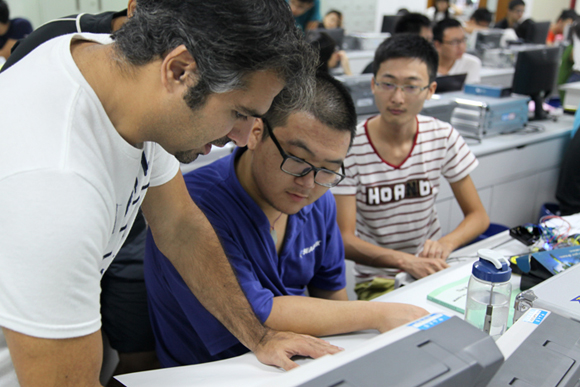
Dr. Mohammad Ali Nasseri from TUM providing guidance
The primary practicum’s teacher team was composed of three parts. They are Associate Professor Kai Huang at SMIE, Senior Engineer Yanxiang Bao from the Teaching Experiment Center on East Campus, and the lecturer team from the Technical University of Munich (TUM) in Germany. First, students learned the operational principle of FGPA board and how to apply C language communication hardware to operate car boards during the several days of theory courses. Then, by means of welding and assembling, they improved and completed the PC board according to their creatively designed schematic diagrams. After a few days of training, the cars they made attained the functions to race straightly, to patrol the black line and to run out of the maze.
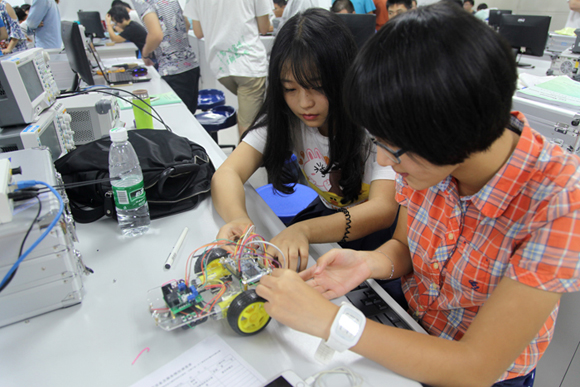
The students studying the Multi-functional Car
On September 6, the intermediate engineering practice of SMIE Grade 2013 undergraduates was officially launched, which, compared with the primary training, is more challenging. The intermediate training is mainly divided into three directions: Mobile Robot Project, Unmanned Surface Vessel Project, and Multi-Rotor Aircraft Project.
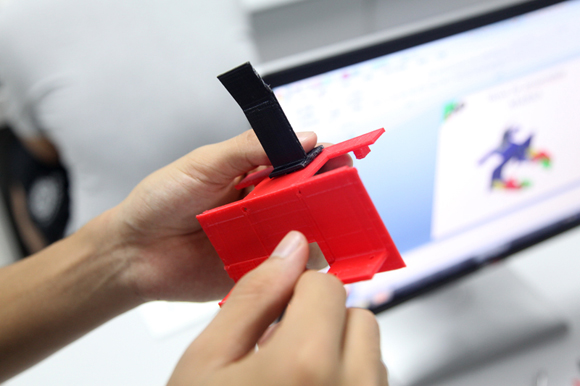
Mechanical Arm
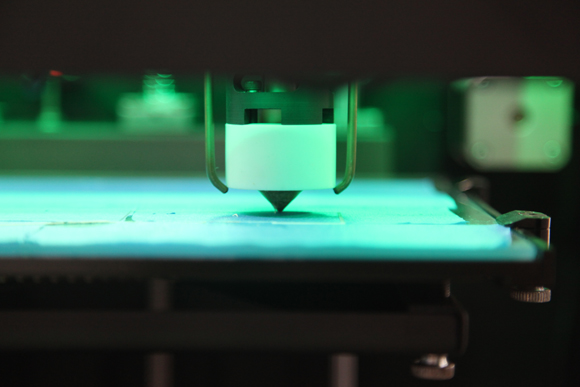
3D Printer
In terms of the Mobile Robot Project, with the guidance of teachers from the Italian Institute of Technology (IIT), students preliminarily understood the working principle of 3D printers as well as mastered operation of 3D modeling software. What’s more, students not only accomplished a mobile robot manipulator and 3D spatial model through the software simulation but also successfully manufactured the mechanical arms of their own cars. After equipping their cars with the mechanical arms, students took the computers with Raspberry Pi together and copied the code into it, making it possible to control cars to move forward and backward, measure the distance as well as control the mechanical arms by means of Raspberry Pi. Additionally, they supplied their cars with cameras, which enabled them to use mechanical arms to catch the ping-pong ball when discovering them.
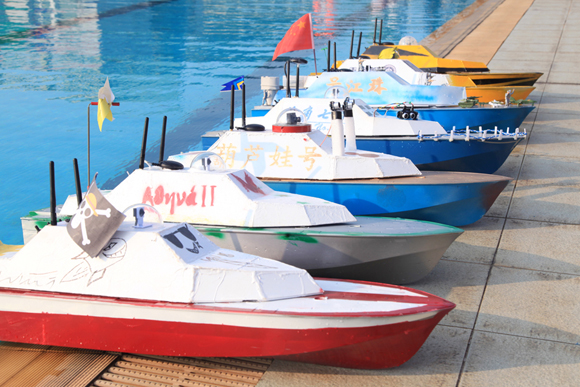
Unmanned Ships
When it comes to the Unmanned Surface Vessel Project, guided by the SMIE teacher Dr. Zhe XuanYuan, students have accomplished connection, test circuit, drilling, encapsulation of hull, debugging, calibration GPS and so on, after which they completed the first time of "Going to Sea" in the unmanned ship project. It was on September 10 that the swimming pool on Zhuhai Campus became a place to debug unmanned ships, where on the sparkling water sailed a group of domineering ships.
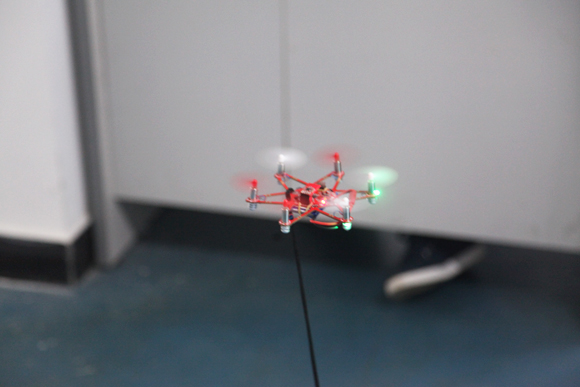
Multi-Rotor Aircraft
With respect to the Multi-Rotor Aircraft Project, after days of courses, the juniors learned the usage of first-order low-pass filter and complementary filter, with which they managed to reduce the interference in the process of signal transmission. Meanwhile, the students grasped the method of computing the flight attitude with cosine matrix and PID algorithm to guarantee the aircraft's smooth flight. Debugging the flight attitude of the unmanned aircraft made it perfect.
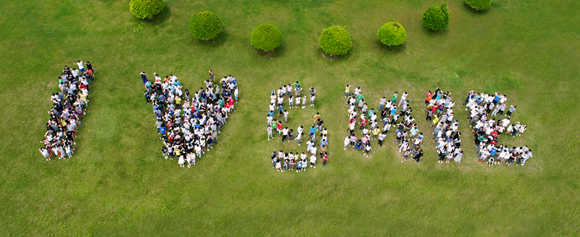
Group photo of SMIE faculty and students
To sum up, by means of the development of team projects, the engineering training helped the SMIE students comprehend the R&D process and stimulated their interest in engineering manufacture, which formed the driving force for innovation and creation. Furthermore, all participants committed themselves to enhancing R&D capability. What they have acquired is far more than the usage of utilities and the industry norm.
Consistently pursuing the principle of talent cultivation—"Learning by Doing", SMIE sets up engineering training at three levels (preliminary, intermediate and high-level), respectively aiming at the freshmen, the sophomores and the juniors, in every summer semester after an academic year. Theory teaching interacts with practice teaching, emphasizing the development of SMIE students' engineering practice ability.